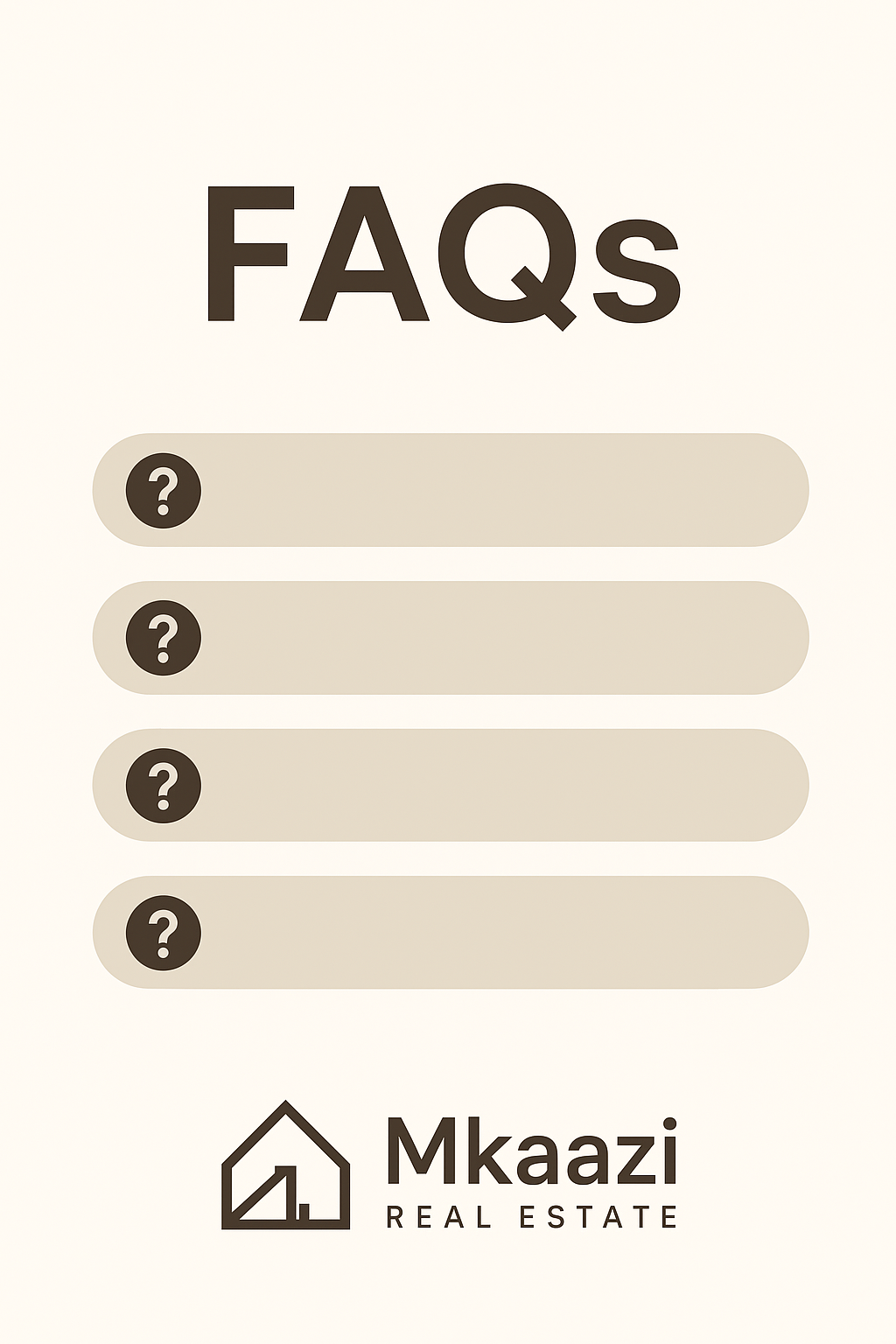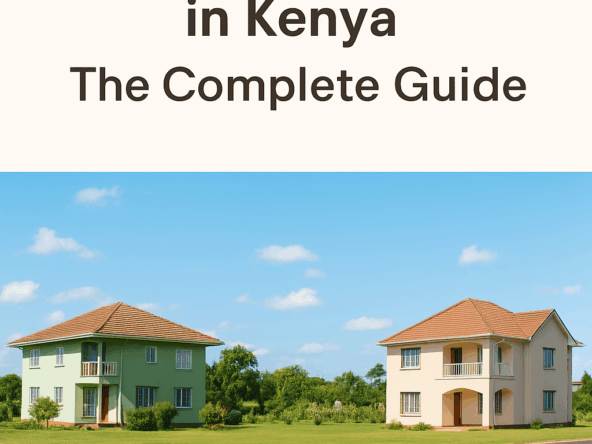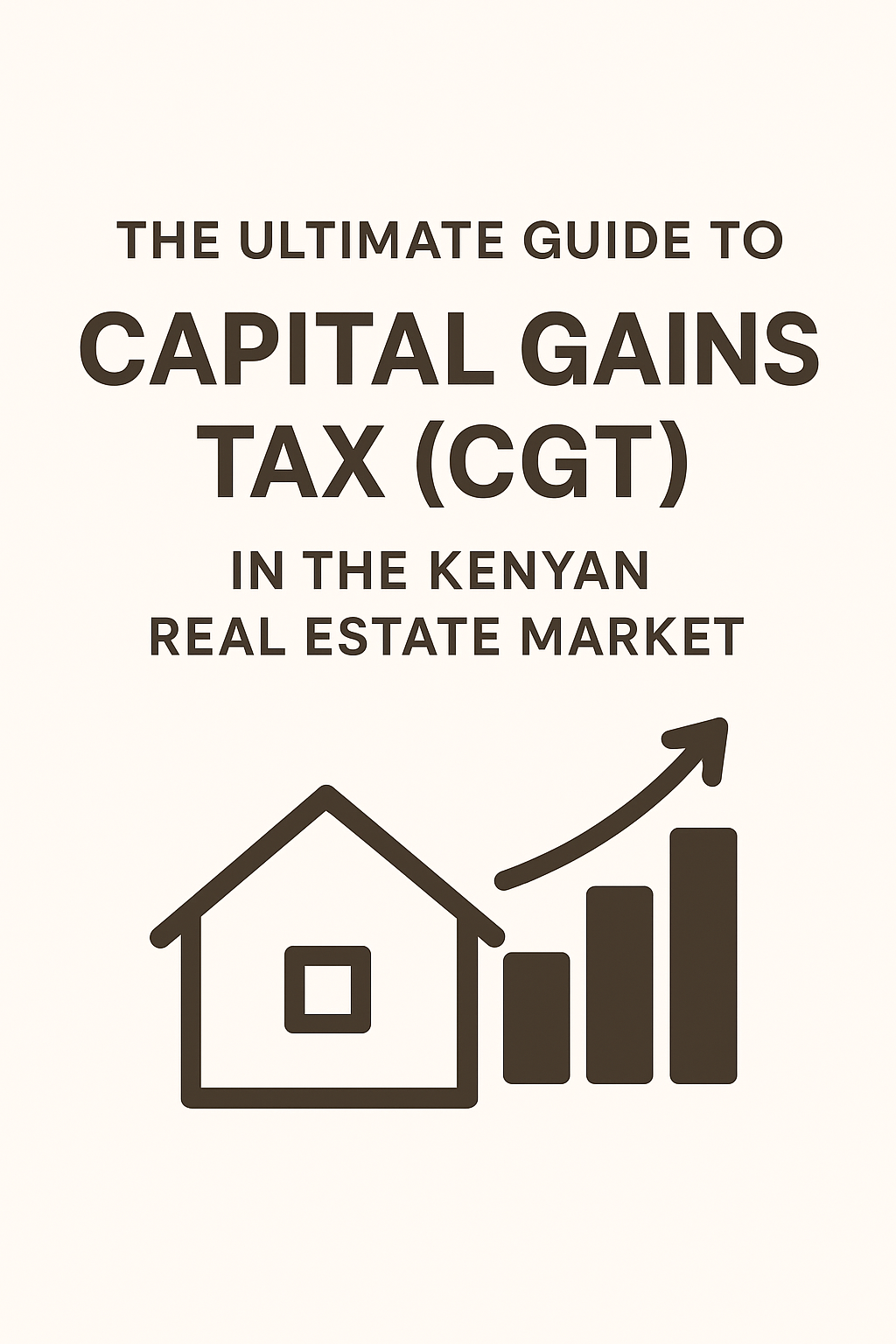There have been major changes in the law that governs property ownership in Kenya and Title Deeds in the recent past because of The Sectional Properties Act 2020 and Land Registration Act, 2012 that were passed by the parliament. These two new laws changed a number of fundamental things in how property ownership in Kenya is structured.
There currently exist different types of title deeds in Kenya as a result of several land Acts that have existed before. But before we get into that, first lets explore the different types of title deeds in Kenya.
What is a title deed?
Anyone who understands something about owning a property has heard about a title deed, it is a government issued document giving evidence of one’s right to land or a section of a property built on a specific piece of land. It is basically a signed agreement that proves ownership of land and defines the legal rights to it.
Types of Title Deeds in Kenya
- Indenture: This is a title deed created under the Government Lands Act Cap 280 (repealed)
- Grant: A Government grant under Registration of Titles Act Cap 281 (repealed) and a county council grant under Trust Land Act Cap 288
- Certificate of Title: This is a title deed issued as a result of subdivision without a change of user.
- Certificate of Lease: This is a title deed under the Registered Lands Act Cap 300 (repealed) for leasehold land.
- Absolute Title Deed: This is a title deed under the Registered Lands Act Cap 300 (repealed) for freehold land.
- Sectional Title: This is a title for a unit within a building for example a flat or apartment.
What the Land Registration Act, 2012 changed
The Land Registration Act, 2012 consolidates the above several titles into the “Certificate of Title” or Certificate of lease. A Certificate of Title is issued for Freehold land while a Certificate of lease is for leasehold land.
Leasehold is a form of land tenure where a lessee holds rights to land for a specific period of time and subject to conditions imposed on land rights by the lessor. In Kenya the Government issues 33, 50, 66, 99 year government leases for urban plots.
All 999 year leases were converted to 99 year leases with effect from 1st September, 2009 when the current constitution was promulgated.
Freehold land ownership is a form of land tenure in which the land owner has the maximum rights to land without restrictions in terms of period of ownership and rights exercisable on the land.
What The Sectional Properties Act 2020 changed
This new Act has impacted on property ownership in Kenya in various ways, as articulated by MMS Advocates is a Kenyan corporate and commercial law firm:
- A new title for each unit will be created after the division of an existing structure into units by way of registration of a sectional plan, prepared by a surveyor. This will be a change from the old regime where there was one common title that is shared by many people who have long-term leases that entitle them to ownership over their individual units or have a share in the land owning company.
- Upon registration of the sectional properties, a certificate of title shall be issued for freehold property and a certificate of lease for leasehold property. The new title will include the percentage of share owned in a common area. All the interests such as charges and easements that are registered against the main title will be endorsed on all the certificates of title that will be issued in respect to the sectional units.
- The Act will lead to the establishment of an Owner’s Corporation after the registration of a sectional plan. The Corporation is not a company and thus will not be regulated by the Companies Act, 2015. It is mandated with the management and the administration of the estate and the common areas. A big departure from the previous regime is that the Owner’s Corporation will not own any common areas. This will do away with the requirement for the appointment of an institutional manager to manage the units, common property, and the movable and immovable property of a corporation. Upon transfer of contracts, assets and liabilities to the Corporation, the Management Company will be wound up.
- The New Act requires that all the plans presented for registration as a sectional plan shall be geo-referenced. This means that the plan must be referenced using a specific location either on, or above or below the earth’s surface.
Do these changes invalidate title deeds that were issued prior?
All title deeds acquired under the repealed land laws will be replaced with new ones, in compliance with the Land Registration Act, 2012 in a process called conversion.
But in the meantime all pre-existing title deeds are still valid and transferable
Title Deed Conversion is the process of migrating all parcels from the repealed land registration statutes to a unitary regime under the Land Registration Act, 2012.
This exercise is free of charge. The exercise is being done systematically, and affected titles will be listed in the Gazette Notice before new title deeds are processed and issued.
The title deed conversion process is already underway. The process has begun in Nairobi before extending it to other parts of the country.
Once the process of replacement commences, the replacement of titles will be instant.
It is not possible for two or more people to have “genuine” title deeds. In this case, only one title deed would be genuine.
A landowner will be required to present an application to the Registrar in Form 97 and attach the original title and copies of their identification documents.
The replacement process is not available online since the proprietor has to surrender their old title deed for them to be issued with a new one under the Land Registration Act, 2012.
What does all this mean going forward?
Once the conversion process is complete, only three types of title deeds that will remain going forward.
- Sectional – This is newest type of title deed that allows a person to own a single unit within a building such as an apartment or a flat. (Owners of sectional properties will now be issued with a certificate of title for freehold property or certificate of lease for leasehold property).
- Leasehold – This is a type of title deed where the ownership and use of the land is capped at a maximum of 99 years.
- Freehold – This type of title deed gives the owner all the rights to the land without restrictions either on use or the number of years.
How do these different types of title deeds stack up against each other?
Many property buyers have a bias for freehold property, and for good reason. It gives you more flexibility with less expenditure. But there is a catch. It is mostly more costly to buy, unless you have an awesome agent like us who can get you deals not found in the regular market.
In terms of development control, freehold property offers you a blank slate. This is followed by leasehold property that usually has limitations on what can be built. The most restrictive type of property is the sectional title.
Being in possession of a title deed ultimately means that you own property for as long as your lineage endures.
Being in possession of a Certificate of Lease simply means that you own the property only for a specific period of time. Unless it is renewed when that period lapses, the land reverts back to the grantor of the lease. There is a cost associated with the renewal.
When you have your own title deed there are no fees in either rent or dues.
A leasehold certificate demands that the holder pay a certain regular pre-agreed upon fee to the person or entity owning the land.
With a title deed, you own the property and your family succeeds that piece of land owning the property forever. There will not be a need for reapplication of ownership.
While in possession of a certificate of lease, you as the holder will be needed to reapply for ownership if you wish to keep the land, after time agreed upon lapses.
What type of properties can non-Kenyans own?
Indeed there is no law that prohibits non-citizens from acquiring and owning freehold land, the Constitution however restricts that ownership to leasehold of a period of 99 years.
What does an original Kenyan Title Deed look like?
An original Kenyan Title deed is white in color and with a bright red seal and signature on the bottom left corner of the front page. It is a booklet with four pages.
- Page 1 – This is what you see when you hold it. It has the title number, estimate size of the land, map sheet number, name of the owner and National ID number. In brief it also shares an explanation on the type of land, has a seal, signature and the date of issue.
- Page 2 – At the top is has 2 sections A and B described as, property and proprietorship. This provides further details such as parcel number details of the owner, a signature and stamp.
- Page 3 – This section provides in-depth details on the history and records of the land. It is called encumbrances section. This is where any court cases, loans, mortgage, dispute or any other special details about the land is recorded for reference.
- Page 4 – This is more of the back cover; it is almost similar to the first page. It records the Title Deed number and the document unique bar code at the bottom.
How can one legally acquire a Title Deed in Kenya?
The Land Act, 2012 under Section 7 outlines seven ways one can use to legally acquire a title deed in Kenya. They are as follows:
Allocation
This is where public land is transferred by the government to individuals usually for a specified time and for specific use with stated conditions. Allocation can be through a public auction, tender, drawing of lots or balloting or by confining allocation to a disadvantaged group. For land to be allocated, it must first be planned, surveyed and serviced.
Land adjudication
This is when rights and interests to land are ascertained and recorded in areas of community land (formally known as the trust land areas). The Government declares such an area as an adjudication section and proceeds to adjudicate and issue title deeds to members of the community above the age of 18.
Compulsory acquisition
This is the acquisition of land by the government for a public purpose but subjects to fair and prompt compensation. Publication of the intention to acquire is done through the Kenya Gazette and County Gazette.
Prescription
This is also known as adverse possession and occurs when one gains title to real property through the occupation of land without opposition for a period not less than 12 years.
It involves a court process and the adverse possessor must prove that she/he actually occupied the land continuously without interruption for the above specified time.
Settlement programs
This is when the government provides access to land for squatters, persons displaced by natural causes like floods, development projects, conservation or internal conflicts by use of the Land Settlement Fund administered by the National Land Commission. Formerly it was known as Settlement Fund Trustees.
Transmissions
This is when ownership passes to another party whose powers over the land are restricted as in cases of death, bankruptcy and on liquidation of a company.
In case of death, a personal representative will be registered as the proprietor of the land, for bankruptcy, a trustee becomes the registered proprietor while a liquidator shall be registered as the proprietor in cases of liquidation of companies, all by order of the court.
Transfers
This is the transfer of rights to land through a sale. A transfer is done after acquiring consent from the relevant County Land Management Boards in (all 47 counties).
Stamp duty of 2 per cent of the value of the land is payable to the government in townships and rural areas while a duty of 4 per cent is charged on land in municipalities and cities. The transfer document with the original title is then booked for registration in favour of the buyer.
How do I verify A Kenyan Title Deed’s authenticity?
The most effective way to identify a genuine title deed from a fake one is by doing a title deed search at the Land’s Registry.
You can either do a manual or online search if the registry you wish to conduct the search has been digitized. At this point in time most of the land registries in Kenya are still analog, and you need physically visit and do a manual property search.
Documents required to conduct a land search include;
- A copy of your identification document,
- A copy of your KRA pin certificate, and
- A four-page copy of the land title deed.
You will then need to fill a search request form, in most cases, this will take not more than three working days.
The importance of a search is to help ascertain:
- The legal owner of the land;
- Whether there are cautions put on the title deeds due to disputes on the land or pending court cases regarding the land;
- Whether there is a charge on the land, in cases where the title deed has been used as collateral for securing a credit facility/ loan with a financial institution like a bank, etc
Depending on the size and the intended use of the land, you may also be required to get a registry index map (RIM) from the Survey of Kenya offices and to have a surveyor physically ascertain that the measurement on the ground matches those on the map.
Depending on the purpose of the intended transaction, a green card search might be necessary, especially where a unit has been subdivided on transferred a number times.
Frequently Asked Questions About Title Deeds in Kenya
There is a way one can secure their investment in a property against foul play, especially in the event where one suspects other parties would want to tamper with its ownership. One such way is by using a caveat or a caution.
1. What is a Caveat?
A caveat is like a warning sign on a piece of paper that proves you own something, like a house. It tells people that someone else has a special interest in it, so they can’t do things like selling it, buying it, or using it as a promise for a loan without asking the person with the interest first. If you think someone might try to do something sneaky with your property, you can put a caveat on it.
2. How does on place a caveat on a property ?
When you want to put a caveat in Kenya, there’s a specific way to do it, and you’ll need some important papers. Here are the documents you’ll need:
1. A special form called Form R.L. 22.
2. A statement (affidavit) explaining why you’re interested in the land and want to put a caveat on it.
3. A copy of the land ownership paper (title deed) or at least the title deed number.
4. Some money for the process.
Once you’ve done this, the person in charge will send a written notice to the landowner whose property you’re affecting. While the warning is in place, no one can make changes to the land title without your agreement or a court order.
3. How is a caveat removed?
You can take away a caveat when you feel it’s the right time. There are three ways to do this: a court order, the person who originally put the caveat, or a registrar.
The registrar can remove it in two main ways:
1. If someone else who is interested asks for it to be removed.
2. When the time limit for the caveat runs out.
And that’s about it!.
Feel free to shoot us any questions you may need help with around property ownership and title deeds in Kenya to info@mkaazirealestate.com or WhatsaApp us on +254763568989 and we will be happy to help.
Check out or verified property listings here.





